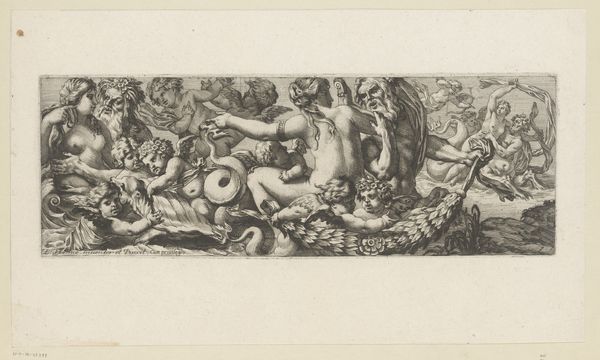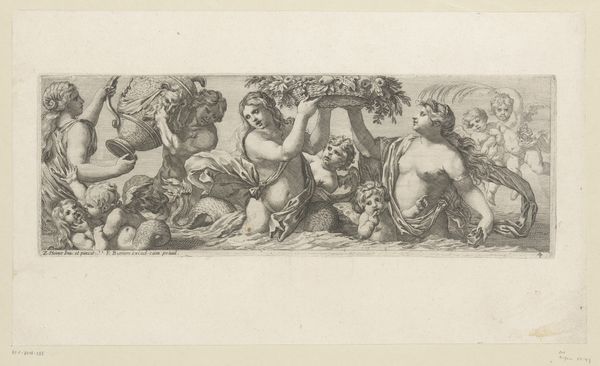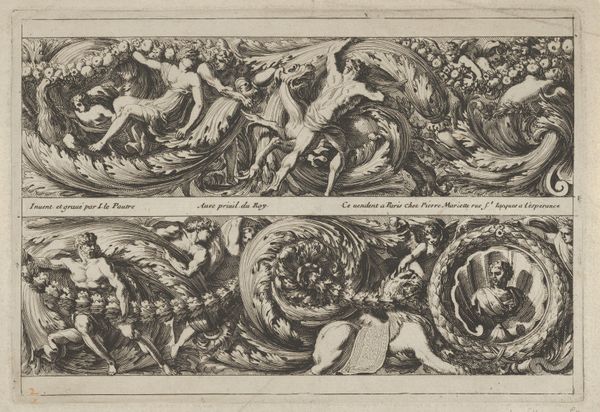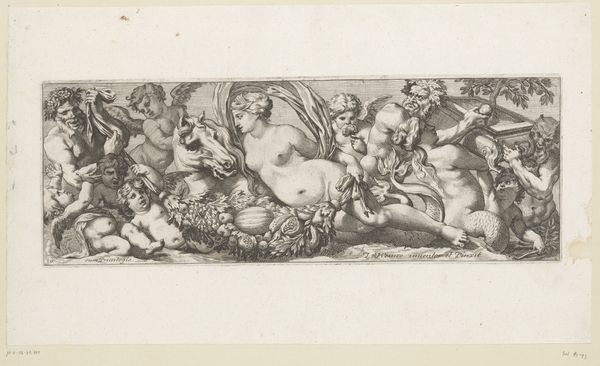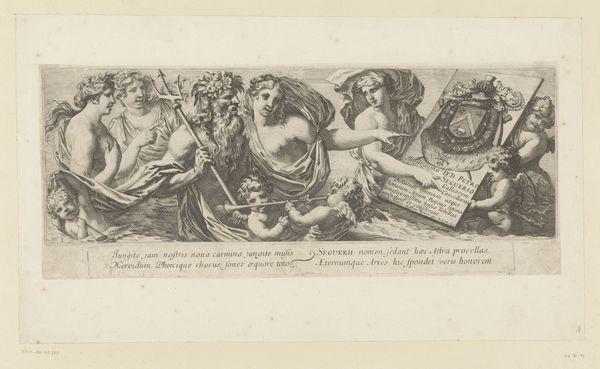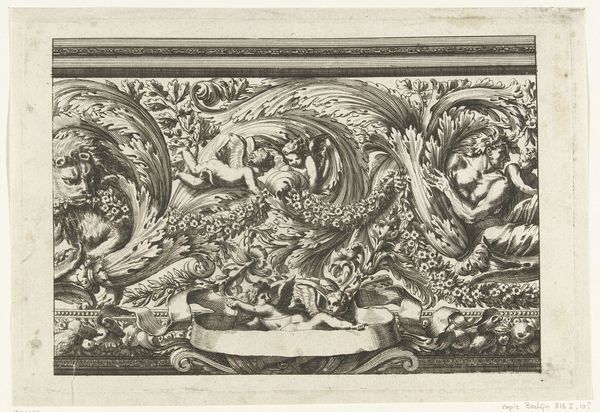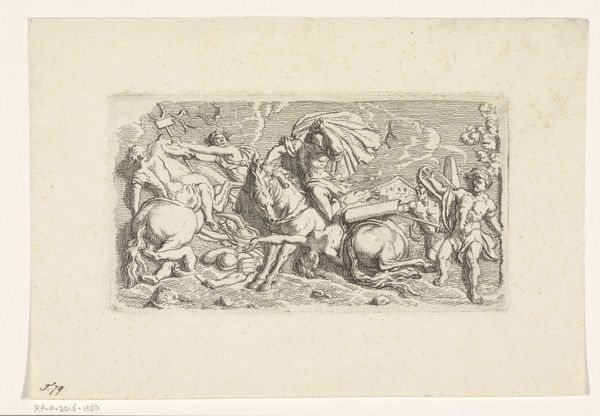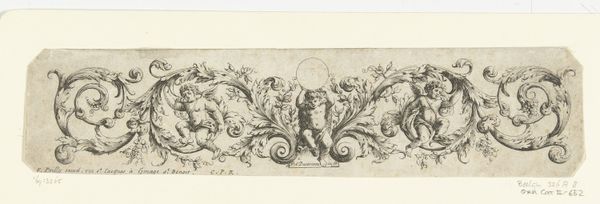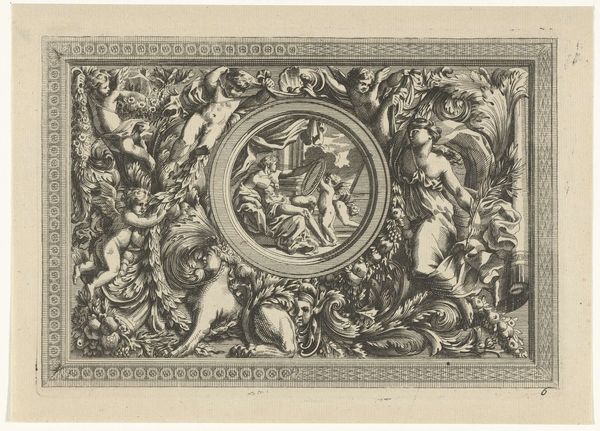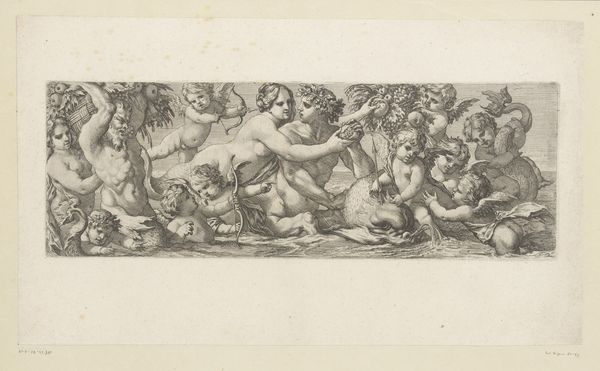
Mythologische voorstelling met goden in verering rond een altaar in het water 1630 - 1720
0:00
0:00
print, engraving
#
allegory
#
baroque
#
ink paper printed
# print
#
figuration
#
history-painting
#
engraving
Dimensions: height 130 mm, width 362 mm
Copyright: Rijks Museum: Open Domain
François Bignon created this etching of a mythological scene sometime in the mid-17th century. Its subject is an altar surrounded by gods. But beyond the simple description, what can we say about the image’s place in French society at the time? Seventeenth-century France saw the rise of absolutism under the Bourbon kings. In the visual arts, this meant the establishment of royal academies to set standards and control artistic production. Bignon was never admitted into the Académie royale de peinture et de sculpture; printmakers were excluded until 1720. The format of the artwork suggests that this print was created as a design for another object, such as a tapestry. Ornament prints like this one played an important role in disseminating classical designs, helping to establish a unified French style. Art historians consult a wide variety of resources in order to understand works of art in relation to their social and institutional context. Scholarly journals, archival documents, and collections catalogues all help us interpret the complex histories embodied in images like this one.
Comments
No comments
Be the first to comment and join the conversation on the ultimate creative platform.
